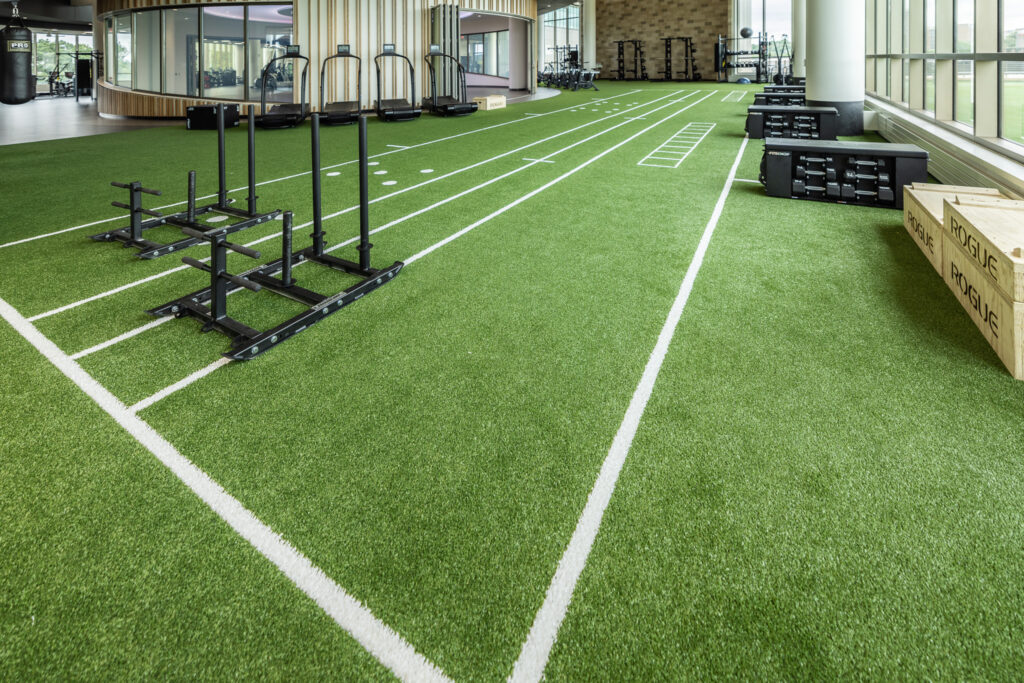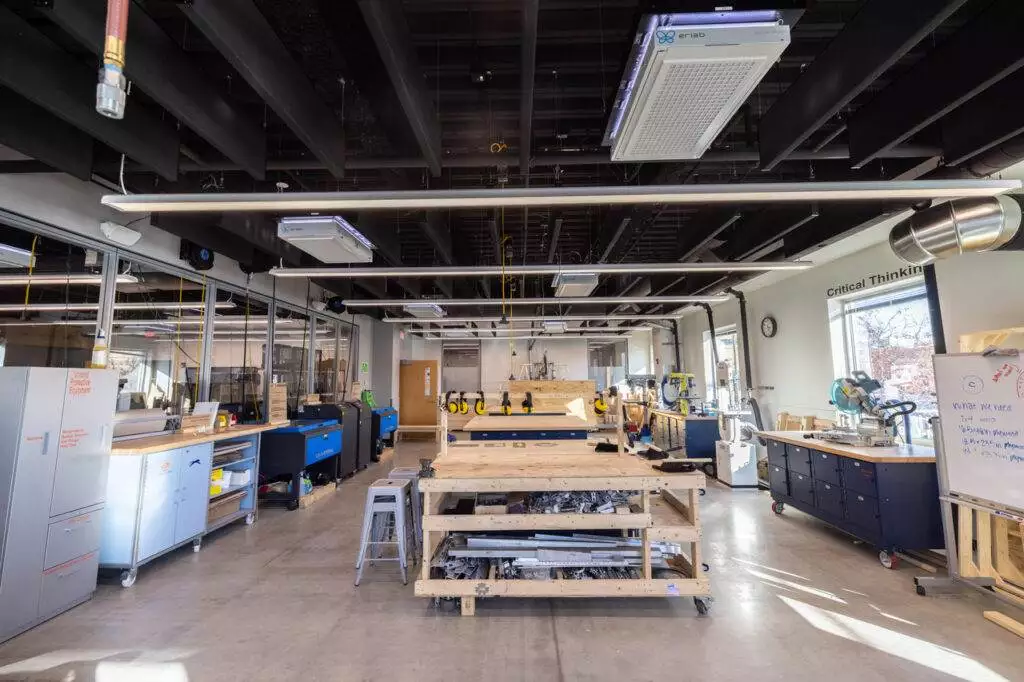Blogs & News
- Category: Athletic
- DATE: September 12, 2023
Exploring Outdoor Athletic Facilities: Trends and Options for Your Unique Space
When it comes to outdoor athletic facilities, the design and functionality of these spaces have evolved significantly over the years. From school campuses and community centers to sports complexes and parks, outdoor athletic facilities promote physical activity, health, and community engagement.
Whether you’re a school administrator, a community planner, or a sports facility manager, understanding the latest trends and options for designing outdoor athletic spaces can help you create an environment that meets users’ needs while maximizing potential.
Let’s explore critical factors to consider, challenges to overcome, emerging trends in outdoor athletic facility design, and how H2I Group can assist you in achieving your vision.
Designing an Outdoor Athletic Facility
When designing an outdoor athletic facility, it’s crucial to consider several factors to ensure success.
User Experience
The user experience should be at the forefront of your design. Consider users’ diverse needs and preferences, whether they are athletes, students, or community members. Incorporating amenities such as seating areas, shade structures, and water stations can enhance the overall experience.
Multipurpose Community Facility
Building a multipurpose facility allows for maximum utilization of the facility. Think beyond traditional sports and consider incorporating spaces that can host events, classes, and other community gatherings. Create opportunities for various activities for different age groups to enjoy.
Budget and Funding Sources
A clear budget and potential funding sources are critical in design and construction. They may involve grants, sponsorships, partnerships, or fundraising efforts. These funds are vital to accomplishing present and future objectives, including design and construction, maintenance, programming, and upkeep.
Site Selection
The location of the facility plays a significant role in its success. Accessibility, visibility, and proximity to the target audience are primary considerations. Additionally, consider the size of the site to ensure that it can accommodate all your desired features.
Safety
Designing an outdoor athletic field for safety involves a comprehensive approach that considers various elements to minimize the risk of injuries to players, officials, and spectators. You have to consider sport-specific regulations and standards as well as proper surface materials, shock absorption, drainage and irrigation, lighting, equipment safety, boundary markings, signage, security and crowd control, accessibility, emergency access, first aid, as well as proper seating, railing, and barriers for spectator safety.
Future Expandability
Designing with future expansion in mind ensures that the facility can accommodate growing user demands and changing needs. Adding features and amenities to the facility to accommodate events, sports leagues, and other activities should be easy. This also allows for the flexibility of using existing space to create something new.
Revenue Generation
Explore opportunities to generate revenue from the facility through rentals, memberships, events, and sponsorships. This revenue can cover the costs of upkeep, programming, and other operations. Additionally, it can provide the resources to add new features and upgrade existing ones.
Challenges To Overcome
While the rewards of creating an outdoor athletic facility are substantial, you also need to address some challenges. These possible concerns may include:
Strict Deadlines
Some sports and other activities require rigid deadlines as they may start seasonally or have a limited operation window. This can make meeting project timelines while ensuring a high-quality facility challenging. An efficient design and construction process is achievable with proper planning, resources, coordination, and support.
Environmental Challenges
Outdoor athletic facility owners must be mindful of environmental concerns, such as public safety, preservation of natural resources, and protection from weather elements. Sustainability practices can be a great way to reduce the impact of these concerns and create a facility that thrives in its natural surroundings.
Space Constraints
Limited space requires innovative design solutions to maximize utility without sacrificing quality or user experience. With a carefully planned layout and use of space, it is possible to create an efficient and aesthetically pleasing facility.
Design Challenges
Balancing aesthetic appeal, functionality, and safety can be complex. Visibility, seating arrangement, and shade structures are crucial elements of a successful design.
Turf Selection
Suitable turf is crucial for player safety and field durability. Natural grass provides a soft but high-maintenance surface, while synthetic turf installation offers a low-maintenance and versatile solution. Synthetic turf surfaces can offer benefits in terms of impact reduction, rotational injury prevention, and bacterial/fungal resistance. With either choice, you want to ensure the turf or grass is well maintained to prevent uneven or hazardous areas. Consider materials and underlay systems that offer proper shock absorption to reduce the risk of injuries from falls and impacts.
Weather Safety
Designing weather-resistant facilities that can withstand various weather conditions is vital to ensuring user safety and facility longevity. Selecting suitable materials, such as windscreens, roofs, and canopy structures, can help protect users from various weather elements.
Parking Spaces
Adequate parking is often overlooked but is essential to accommodate visitors, especially during events or busy periods. Designers must consider the possible number of vehicles using the facility and plan accordingly.
Proper Lighting
When designing lighting systems for athletic fields or venues, you want to collaborate with professionals who are experienced in sports lighting. You must consider glare control for players and spectators, uniform illumination, flicker and strobe effects, proper color rendering index, heat dissipation for LED lights, electrical safety, reducing light spill into surrounding neighborhoods or wildlife areas, and emergency lighting scenarios. Make sure to follow relevant safety guidelines and regulations to help ensure the safe and effective implementation of LED sports lighting systems.
Emerging Trends in Outdoor Athletic Facility Design
Staying current with outdoor athletic facility trends can provide insights into creating a dynamic and appealing space. Some of the trends that are gaining traction include:
Versatile Spaces
Facilities that can host a wide range of activities, from various sports tournaments to cultural events, are becoming increasingly popular.
Technology Integration
Many outdoor athletic facilities are integrating technology to enhance the user experience. Interactive kiosks can provide information, schedules, and even virtual facility tours. These kiosks can also become more entertaining with interactive features such as games, cameras, quizzes, and audio-visual components. Interactive scoreboards are designed to provide real-time information and engagement to both players and spectators during sporting events. These scoreboards go beyond the traditional static displays by incorporating interactive elements, modern technology, and dynamic content presentation.
Experiential Amenities
Facilities should offer more than just sports opportunities. Playgrounds, fitness stations, entertainment centers, and walking trails add an element of variety and engagement.
Venue Inclusivity
Designing facilities that cater to diverse user groups fosters a sense of inclusivity and community. Consider building features and amenities that are inclusive for pregnant women, nursing mothers, people of all genders, people with disabilities, and those with other special needs.
Emerging Sports
When thinking about an outdoor athletic facility, football, baseball, tennis, and track may come to mind. With pickleball being the fastest-growing sport in the United States and padel being the fastest-growing sport in the world, it is smart to think about incorporating dedicated spaces to keep up with the trends and extreme popularity of these emerging sports.
H2I Group: Your Partner in Outdoor Athletic Facility Solutions
When designing and creating outdoor athletic facilities that cater to your unique needs, H2I Group is your trusted partner. With a wealth of experience in the industry, we bring expertise and innovation to every project.
We specialize in creating outdoor athletic facilities customized to your vision and tailored to meet the needs of your users. Whether you need help with synthetic turf installation, scoreboards, bleachers, or protective sports netting, H2I Group provides a complete solution. We also help with indoor and outdoor sports equipment for schools, gyms, and other facilities.
Our team understands the importance of user experience, budget considerations, and space limitations. We build versatile and functional spaces that go beyond traditional expectations. From the initial concept to the final implementation, H2I Group ensures a seamless process that delivers exceptional results.
Conclusion
Finding the right solutions for outdoor athletic facilities requires a comprehensive approach considering various factors, challenges, and trends. By partnering with H2I Group, you gain access to a team of experts who are dedicated to transforming your vision into a reality.
Together, we can create outdoor athletic facilities that meet your community’s needs and exceed expectations in terms of functionality, aesthetics, and innovation. Contact us today to get started.
recent blogs



GET STARTED
LET’S TALK ABOUT YOUR PROJECT TODAY
Are you in need of expert guidance for your building project? H2I Group’s experienced professionals are here to assist you with any questions or concerns you may have. Contact us today to learn more about our services and how we can help you achieve your goals.

